Rhinoplasty
Rhinoplasty
Rhinoplasty, sometimes referred to as a “nose job”, is a surgical procedure to improve the shape, size, and symmetry of a person’s nose, and bring it into better proportion with the rest of the face by modifying the bone or cartilage. It can also correct nose after an injury, a birth defect, or breathing problems caused by structural defects in the nose.
Reasons for Rhinoplasty
- Nose size in relation to facial balance
- Nose width at the bridge or in the size and position of the nostrils
- Nostrils that are large, wide or upturned
- Nose profile with visible humps or depressions on the bridge
- Nasal tip that is enlarged or bulbous, drooping, upturned or hooked
- Nasal asymmetry
Possible changes that the surgeon can make to your nose through rhinoplasty include:
- a change in size
- a change in angle
- reshaping of the tip
- straightening of the bridge
- narrowing of the nostrils
Who is a Good Candidate for Rhinoplasty?
Good candidates for rhinoplasty are people who are finished growing, in good health, and unhappy with the current size or shape of their nose. It is also important for patients of any age to have realistic expectations of what rhinoplasty can do for you.
Rhinoplasty Procedure
Rhinoplasty can be done in the hospital, doctor’s office, or an outpatient surgical facility. Depending on how complex your surgery is and what your surgeon prefers, rhinoplasty requires local anesthesia with sedation or general anesthesia.
Once you are numb or unconscious, the surgeon will make incisions between or inside your nostrils. He will separate your skin from your cartilage or bone and then start the reshaping. If your new nose needs a small amount of additional cartilage, the surgeon may use cartilage taken from your ear or deep inside your nose. If more is needed, the surgeon can use cartilage from your rib, implants or bone from other parts of your body. A bone graft is additional bone that is added to the bone in your nose.
After these small or large changes are made, the surgeon places the nose’s skin and tissue back and stitches the incisions in your nose.
Types of Rhinoplasty
Rhinoplasty is highly individualized, and depending on a patient’s anatomy and desired changes, the exact techniques the surgeon will use during a procedure will look a little different each time. In general, the surgeon’s techniques will fall under one of the following procedural approaches. Each technique has its own set of advantages and disadvantages that the patient can discuss with the doctor before moving forward with surgery.
Open Rhinoplasty
Open rhinoplasty is performed by making a small incision in the columella, the soft tissue that separates the nostrils. This method allows for easy access to the underlying bone and cartilage structure and produces a small scar that can be visible for up to 6 months following the surgery. The primary benefit of the open technique is improved accuracy for reshaping the framework of the nose to achieve desired contouring.
Closed Rhinoplasty
Closed rhinoplasty is performed by making all incisions inside the nostrils. This technique is less invasive and creates no visible scarring along the columella which is quite common in open rhinoplasty. The main advantage to the closed rhinoplasty technique is to significantly reduce the duration of the surgery as well as the healing time. This technique is also associated with reduced swelling to the nasal tip and is extremely valuable in a patient who requires a minor nasal tip reshaping.
Recovery from Rhinoplasty
After surgery, the doctor may place a metal or plastic splint on your nose. The splint will help your nose retain its new shape while it heals. He may also place splints inside your nostrils to protect and stabilize your septum. Some bruising and swelling are expected for the first few weeks, but it may take up to a year for your new nasal contour to fully refine. An external dressing is usually worn for the first week. Once removed, camouflage makeup can be used if needed and you can usually return to work shortly thereafter. Over the next several months, there will be a subtle but ongoing remodeling process as your nose becomes more sculpted and refined.
Pre-Operative Instructions
- Avoid medications containing aspirin or ibuprofen for two weeks before surgery.
- If you smoke, stop smoking. Smoking slows the healing process after surgery and may make you more likely to get an infection.
- Please shower the morning of your procedure, but do not apply deodorant, creams, lotions, powders or oil to your skin.
- Please do not wear jewelry or makeup, and do not bring valuables with you to surgery.
Post-Operative Instructions
DO
- Use cool compresses for the first three days.
- Sleep on your back, head elevated 30–40 degrees, for two weeks.
- Sit or stand as much as possible for the first three days.
- Open your mouth if you sneeze.
- Take baths instead of showers while you have bandages on your nose.
- Eat high-fiber foods, such as fruits and vegetables, to avoid constipation. Constipation can cause you to strain, putting pressure on the surgery site.
- Avoid extreme facial expressions, such as smiling or laughing.
- Brush your teeth gently to limit movement of your upper lip.
- Wear clothes that fasten in the front. Don’t pull clothing, such as shirts or sweaters, over your head.
DON’T
- Wear eyeglasses directly on the nose for about six weeks Drive while taking pain mediation.
- Bend or lift objects heavier than 20 pounds for two weeks.
- Sniff or blow nose until given approval by the doctor.
- Apply makeup for 10 days after surgery.
- Participate in strenuous activities such as aerobics and jogging for two weeks.
- Pull clothing over the head.
- Tweeze eyebrows or use a salon hair dryer for one week.
- Put anything in your nose unless specifically directed by the doctor.
- Use any nose sprays (other than saline spray)
Risks
Risks and complications are quite low but do exist. They include:
- Anesthesia risks
- Infection
- Poor wound healing or scarring
- Temporary numbness in the nose
- Nasal septal perforation (a hole in the nasal septum) is rare. Additional surgical treatment may be necessary to repair the septum but it may be impossible to correct this complication
- Difficulty breathing
- Unsatisfactory nasal appearance
- Skin discoloration
- Increased swelling
- Possibility of revision surgery
- Nosebleeds
- Scarring at the base of the nose
- Nasal Obstruction
Dr. Hamid Reza Vafaei
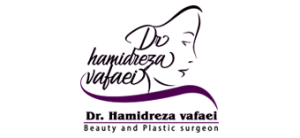


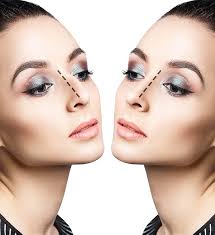
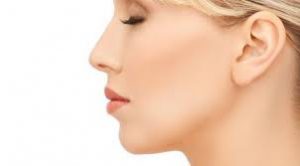



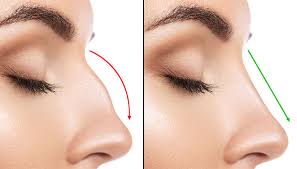
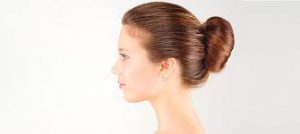




Leave a Reply
Want to join the discussion?Feel free to contribute!